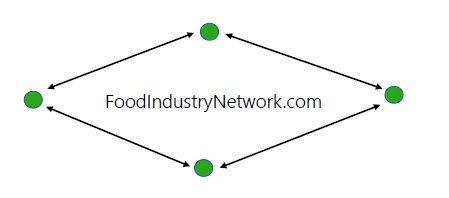Policy risk is on farmers’ minds, but it’s as clear as mud

Canadian agriculture is a major economic contributor, with products that have a lower environmental footprint at a time when Canada’s role in global food security is increasingly clear.
Read Also


Wabigoon Lake Ojibway Nation votes to move forward with potential nuclear waste site in Ignace area
Wabigoon Lake Ojibway Nation’s (WLON) favourable vote gives the WLON-Ignace community the edge as the Nuclear Waste Management Organization’s deep geological repository site.
Those fundamentals drive a lot of optimism in the sector. But — and it is a big but — no matter how good the fundamentals are, it is hard to get past the significant headwinds facing the sector.
That is why the Canadian Agri-Food Policy Institute undertook a national, cross value chain survey to inform the first phase of our Agri-Food Risk Report. This initial survey provided a snapshot that highlighted a sense of optimism in the face of significant risk.
Arguably, things have gotten worse since the survey was done in May. China launched an anti-dumping investigation into Canadian canola. The trains temporarily ground to a halt on Canada’s two national railways. The weather has complicated harvest on the Prairies.
Unfortunately, as much as these risks drive headlines, they are also more of the same: more risk, more disruption, more challenge for the sector as it works to grow and prosper and contribute to Canada’s economic, environmental and social success.
It is easy to understand why extreme weather, trade and market access are risks that are top of mind for the sector. They represent external threats that can wreak havoc, impact farm and value chain profitability, and are hard to mitigate and manage.
These are clear and present threats to Canada’s agriculture and food system. However, the risk that topped the survey, policy risk, is as clear as mud.
While the survey did not define policy risk, it is clear enough that the largest number of respondents identified it as the risk that they worry about the most. Better understanding this risk is part of the work CAPI is doing.
One way to understand this risk is to look at the differences in survey responses. The differences between respondents from the government and from other parts of the sector were often greater than the differences between any other demographic group.
For example, when asked what priorities governments should address, government respondents were more likely to prioritize climate change and less likely to select trade policy and advocacy than farmers and other industry respondents.
There are a variety of realities driving that difference in perception. There is a growing rural-urban divide and its corresponding political consequences and a declining confidence in politicians and the bureaucracy. Increasing attention is being paid to challenges with the public service and a lack of state capacity. Beyond the gap between government and the sector, there is an increasing perception gap between farmers and consumers. These all contribute to the concern about the policy and regulatory environment.
One of the challenges in trying to understand what drives the perception of a policy risk is the challenge separating the rhetoric from the reality.
For example, stakeholders often say the government needs to consult more, that farmers need to be involved earlier in the policy process. However — while it is hard to measure this — anecdotally, the government is consulting more than it has in recent history. In fact, some agriculture associations talk of consultation fatigue.
It is more accurate to say there is a need for better engagement, not more engagement.
There are also often calls about the need for a strategic vision or policy for the sector. However, the government has a Food Policy for Canada, is consulting on a Sustainable Agriculture Strategy and there is the five-year federal-provincial-territorial agreement.
It is more accurate to say that the sector wants to write its own strategy, not that the government needs one.
There are also increasing calls for governments to invest more in agriculture and food. However, Agriculture and Agri-Food Canada is spending more, almost 40 per cent more, than when the government changed in 2015.
So, it is not that the government needs to spend more, but that stakeholders want the money spent differently.
When you spend a lot of time talking to people about the risks that keep them up at night, it is easy to fall into thinking that all the headwinds can be overpowering. It is important to keep the risks in perspective.
That is why CAPI undertook a series of dialogues to dive deeper into the results of the first phase of the Agri-Food Risk Report. While phase one provided a snapshot, the dialogues provide an opportunity to dive deeper and fill in the story behind the numbers. They will inform phase two, which will be released later this fall.
Mitigating risk is essential for any business, organization or sector to succeed. However, the first step is understanding that risk. The work to understand policy risk continues and CAPI looks forward to continuing to work with the sector to manage that risk and to ensuring that the optimism the sector feels is well founded.
Source: Farmtario.com

